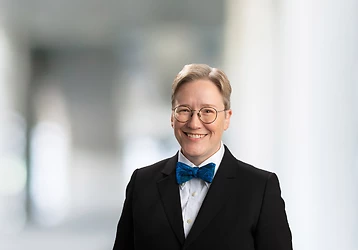NHTSA's Proposal to Mandate that Automobile Manufacturers Incorporate Vehicle-to-Vehicle Capabilities into New Cars
What NHTSA is Proposing
On December 13th, NHTSA issued a Notice of Proposed Rulemaking (NPRM) to establish a new Federal Motor Vehicle Safety Standard (FMVSS) that would require automobile manufacturers to incorporate vehicle-to-vehicle (V2V) communications capabilities into all new light vehicles (https://www.nhtsa.gov/About-NHTSA/Press-Releases/nhtsa_v2v_proposed_rule_12132016). The NPRM would also proposed standardized Basic Safety Messages (BSM) communicated between vehicles to ensure interoperability. NHTSA does not propose initially to mandate or specify particular applications using the V2V communications (such as Intersection Movement Assist (IMA) and Left Turn Assist (LTA)), but would allow the industry to develop and deploy particular safety applications.
As the NPRM explains, V2V communications would be an important component of automated vehicle technologies, and can serve as a critical complement to on-board sensors (such as radar, LIDAR and optical sensors), because of the extended range (300 meters), additional information and imperviousness to weather conditions that can impair on-board sensors. Thus, V2V communications will help prevent crashes and save lives. In addition, the same communications technology can allow vehicles to communicate with pedestrians, bikers and infrastructure (referred to as V2X) to improve safety and efficiency. NHTSA has determined, however, that mandating deployment of V2V capabilities is necessary to obtain these benefits in a timely manner, because marketplace considerations alone do not account for the "network effects" of widespread deployment of this technology.
In addition to requiring the deployment of V2V in light vehicles, the NPRM also recognizes that privacy and cybersecurity must be "baked into" the systems to ensure that consumers will want the technology, and that it will not be abused by bad actors. The NPRM thus proposes use of certification/authentication capabilities, as well as specifying that the BSM will not include any personally identifiable information. In addition, the NPRM would require that vehicles be able to receive over-the-air updates of security and software, and also mandate firewalls between the V2V modules and other vehicle modules.
With respect to the timing for implementation of this new FMVSS, NHTSA is proposing that the effective date to begin implementation would be two model years after the final rule is adopted, with a three year phase-in period to accommodate vehicle manufacturers’ product cycles. Thus, assuming a final rule is issued in 2018, this would mean that the phase-in period would begin in 2020, and all vehicles subject to that final rule would be required to comply in 2022.
The NPRM is seeking comment on the overall proposal for the new FMVSS to mandate V2V capabilities, as well as the details for the requirements. Comments will be due 90 days after the NPRM is published in the Federal Register. Lawyers with Butzel Long will be happy to assist with formulating and submitting comments to NHTSA.
But the Spectrum for V2V is at Risk!
It is important to also note that some of the issues with respect to V2V communications are subject to other regulatory agencies. The Federal Communications Commission (FCC) is responsible for the spectrum that would be used for the V2V communications, as well as the operating characteristics and equipment certification for the communications radios for the service. The FCC had allocated 75 MHz of spectrum in the 5.85-5.925 GHz band for the Dedicated Short Range Communications (DSRC) service back in 1999. However, more recently the FCC has proposed to allow sharing of that band by unlicensed services such as WiFi, because the FCC believes the automobile industry has not yet made much use of the DSRC spectrum. The FCC is considering two alternatives for sharing of the DSRC band, one of which would involve re-channelizing the band and giving automobiles priority in only 30 MHz of spectrum. The FCC proceeding remains open, and there is a comprehensive testing program underway designed to ensure that sharing of the band would not cause harmful interference to the V2V communications.
The FCC is an independent agency, and thus not subject to the directives of the President (unlike NHTSA, which is an executive agency). Thus, the FCC can unilaterally decide whether or not adequate spectrum will be available for DSRC/V2V communications. Indeed, one of the Republican FCC Commissioners issued a statement in response to the NHTSA NPRM asserting the FCC's authority (https://www.fcc.gov/document/commissioner-orielly-statement-proposed-dsrc-standards):
“Although I question whether DSRC will ever live up to expectations, DOT’s proposal to mandate DSRC standards should not, and must not, delay or impact the FCC’s work to test and potentially approve spectrum sharing in the 5.9 GHz band. The Commission must ensure that this band is used as efficiently as possible, including allowing unlicensed operations, for such purposes as Wi-Fi, without causing harmful interference to DSRC safety-of-life technologies.”
It is therefore critical that the automotive industry participate actively in the FCC proceedings and testing programs to ensure that the manifold benefits of V2V and V2X technologies can be realized. Butzel Long can also assist with such efforts.
Stephen L. Goodman
202.454.2851
goodman@butzel.com
Jennifer A. Dukarski
734.213.3427
dukarski@butzel.com











